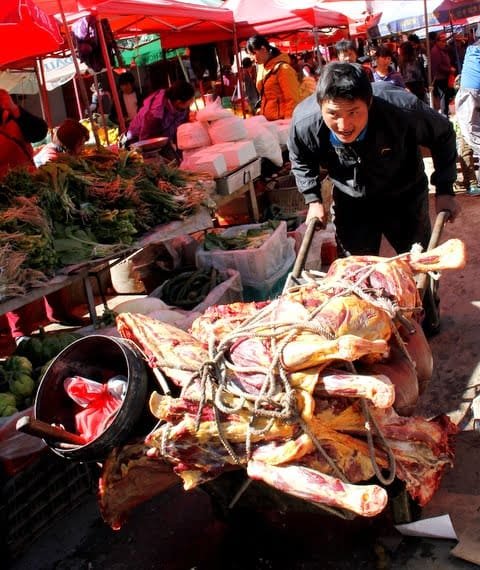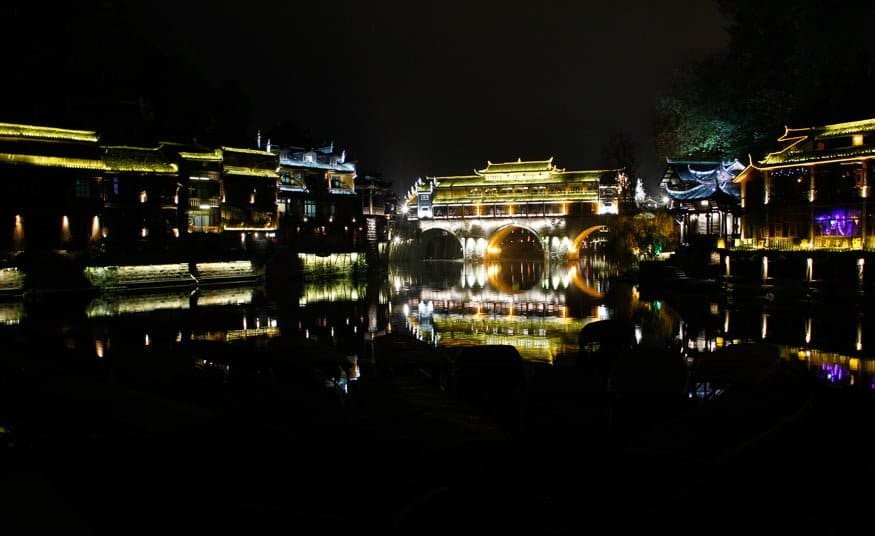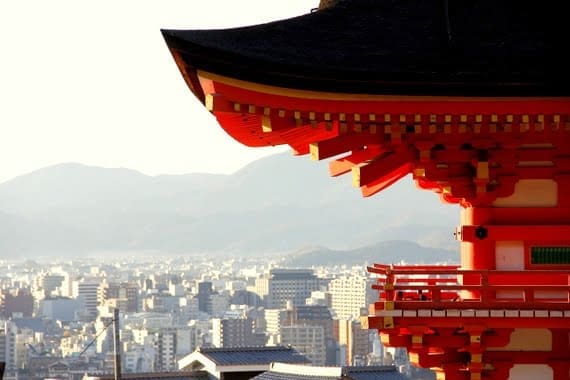
Picture your most elegant image of Japan–-a woman in a floral kimono walking under the shade of her paper umbrella or a zen garden perfectly manicured in a courtyard of red maples–-this is Kyoto. Even in a country that was tragically razed in World War II, this former capital remained pristine. Having all their cultural relics intact gives its residents, and all the Japanese who visit, a special sense of pride for their heritage. This is a place where kimonos are daily attire, ancient shrines overflow with offerings, and geishas rule the night. It’s hard not to fall in love with Kyoto, but to really make us smitten, we had the most amazing combination of lodging: Couchsurfing with a local and honeymooning at a luxury hotel. With insider tips from our Kyoto CS buddy and the top concierge in town, we saw the best of Kyoto. Check out our Kyoto City Guide.
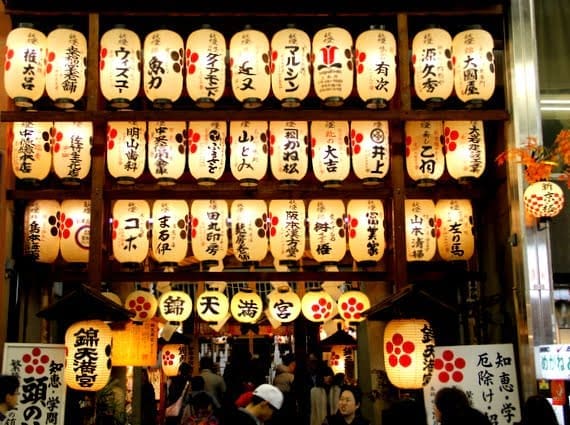
Couchsurfing is an incredible network of people who open up their homes to travelers looking for a place to stay and an inside track to the local culture. Sometimes you have hosts that simply point you to their spare sleeping space and others who thrive on the cultural exchange, excited to share their city with you. Our Kyoto host Kazu was definitely the later. His apartment is 200-square feet and he doesn’t even own a couch, yet he invites travelers nearly every week into this home. We arrived to his place and he already had a grand tour of Kyoto planned for us. Our night started at the 400-year old and fabulous Nishiki market.
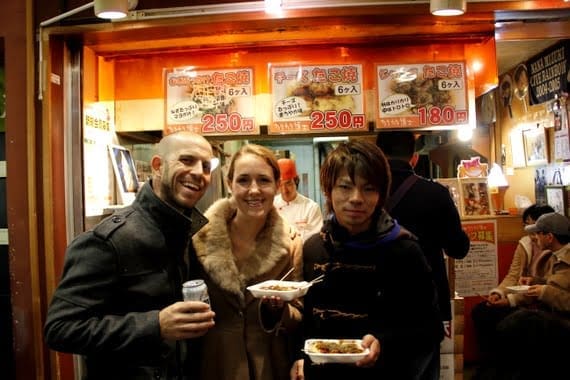
The market was full of beautiful boutiques, gourmet shops, and eateries a little too far north of our travel budget to partake in–except for Kazu’s secret spot. This little stall had these incredible squid dumplings for under $3–an unheard of price for a meal in Japan!
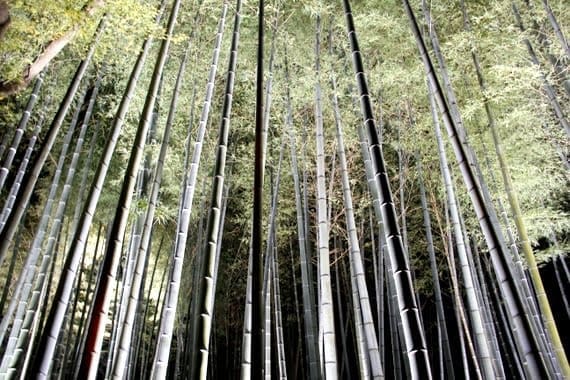
Kazu’s local knowledge continued to impress with our next stop at Kodaiji temple. There was special light exhibit happening that month, illuminating the space in the most dazzling ways–the lawn was sprinkled with LED lights creating a galaxy effect, the Japanese maples shined electric red, and these massive bamboo stalks seemed to stand like skyscrapers.
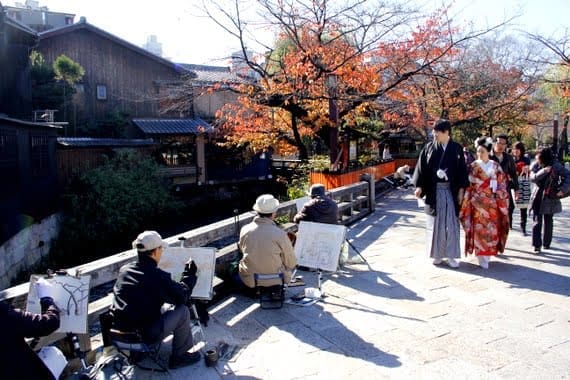
On our way home that night we went to the legendary Geisha district, Gion. Geishas are highly skilled entertainers mostly performing behind closed doors and by invitation only. We caught a glimpse of a few being chauffeured to their next appointment and saw the dimly lit facades of the tea houses. It was all a bit mysterious so we went back by day and found a neighborhood with old-world charm, where artists come to paint the traditional river homes and where young couples go to photograph their wedding portraits.
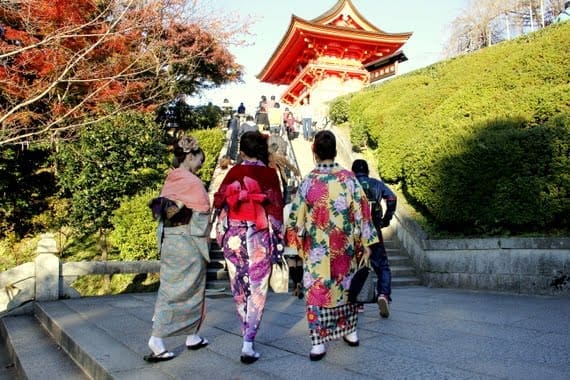
We assumed this traditionally dressed couple in the Gion photo above was on a wedding photo shoot, but as it turns out, kimonos and wooden shoes are how many Kyoto-ites like to dress. We went to the spectacular Kiyomizudera temple and couldn’t help but sneak photos of the gorgeous ladies coming to enjoy the fall foliage against the bright orange gates.
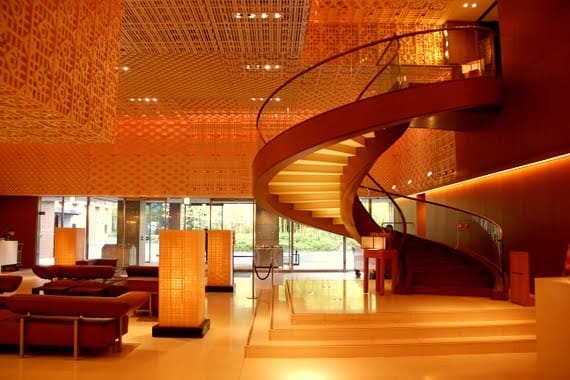
Later that day we left our couchsurfer Kazu’s place and checked into the Hyatt Regency Kyoto. (Yes, we lead double lives, but hey…it keeps things interesting, right?) This hotel in the historic area of Higashiyama Shichijo was the perfect (and super luxurious) home base for some of Kyoto’s prime attractions— it’s across the street from the Kyoto National Museum, next door to the 12th-century Sanjusangendo temple, and just down the road from the UNESCO Kiyomizu-dera temple. It was not only incredibly convenient but had stunning interiors and some of the most helpful staff.
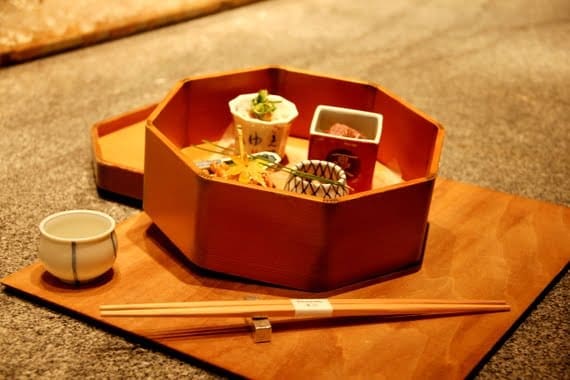
After hearing about our slightly crazy 500-day honeymoon, the Hyatt Regency GM, Ken, invited us to join him for drinks. We chatted endlessly over sake and just when we thought he couldn’t be any nicer he insisted on us having dinner at the hotel’s traditional Japanese restaurant, Touzan. Each course was more beautiful and delicious than the last.
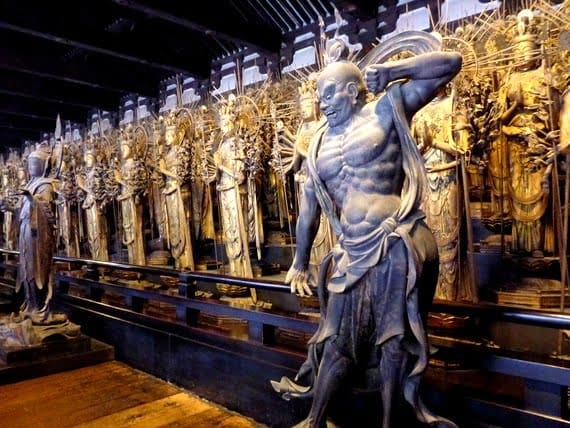
The next morning we walked one door down to the 12th-century Sanjusangen-do Temple. This Buddhist site is filled with 1001 beautiful kannon sculptures and is the longest wooden structure in all of Japan. Fun Fact #1: Being so long and narrow, the temple grounds have been doubling as an archery range for national competitions since the 12th century. Fun fact #2: One of the annual highlights is the Ōyakazu marathon where contestants shoot as many arrows as possible for 24 straight hours. The current record holder shot 13,053 arrows with 62% hitting the target from 198 feet. Wow!
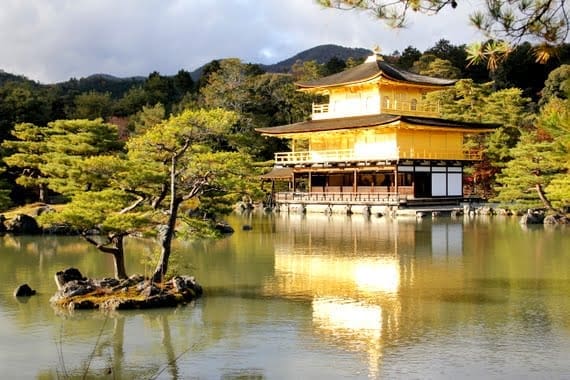
To make sure we saw the most and best of Kyoto, Ken arranged a car for us…and this was no taxi. Our driver Mr. K was a professional guide to Bill Gates, Tom Cruise, the Dalai Lama, and the almost famous HoneyTrek. He introduced us to everything from Kyoto’s top sites, like the gleaming Golden Pavilion above, to his favorite bonsai nursery–all enhanced by his insider knowledge.
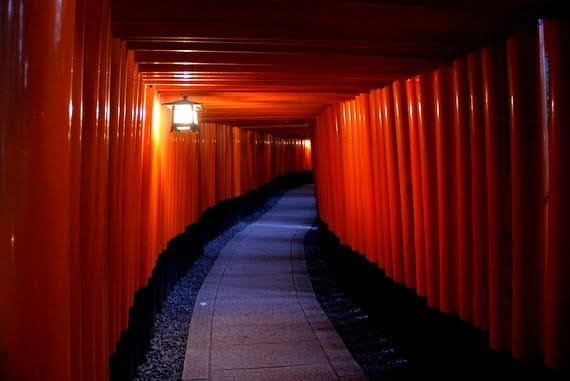
Fushimi Inari Taisha shrine may have an impressive 1000+ years of history but what makes it a star attraction is not the age of its torii gates but the sheer volume. This shrine to the patron of business is made of 1,300 shiny orange gates all sponsored by various companies in Japan, each trying to get in good with the god of success. Hiking the winding corridors of the tightly packed gates is a hypnotic and must-do Kyoto experience.
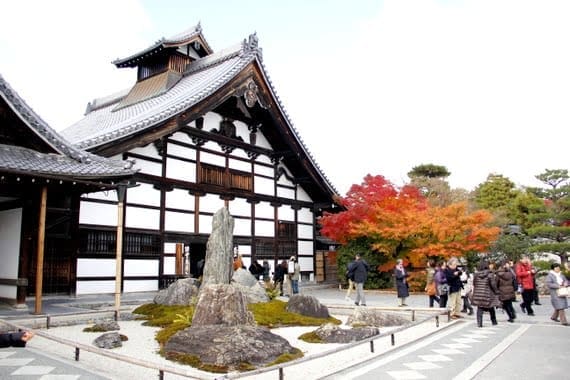
Heading to the outskirts of Kyoto we reached the beautiful Arashiyama. This riverside retreat is one of the best places to see the Japanese red maples in fall and the cherry blossoms in spring so whenever you go, go here to take a boat up the canyon, see the Rokuonji Temple (above), stay at the amazing Hoshinoya ryokan, and revel in the endless charms of Kyoto.
